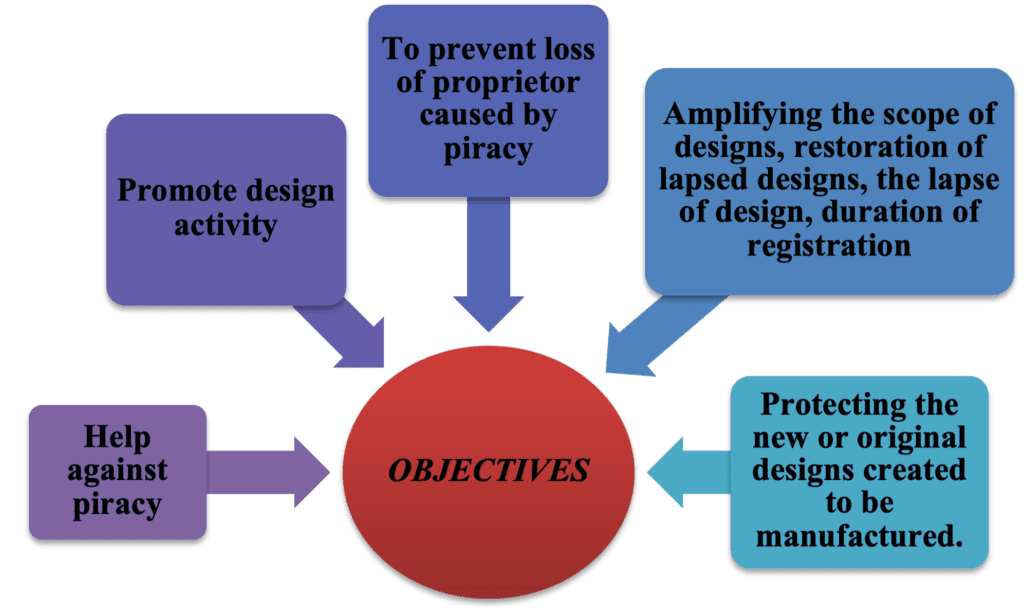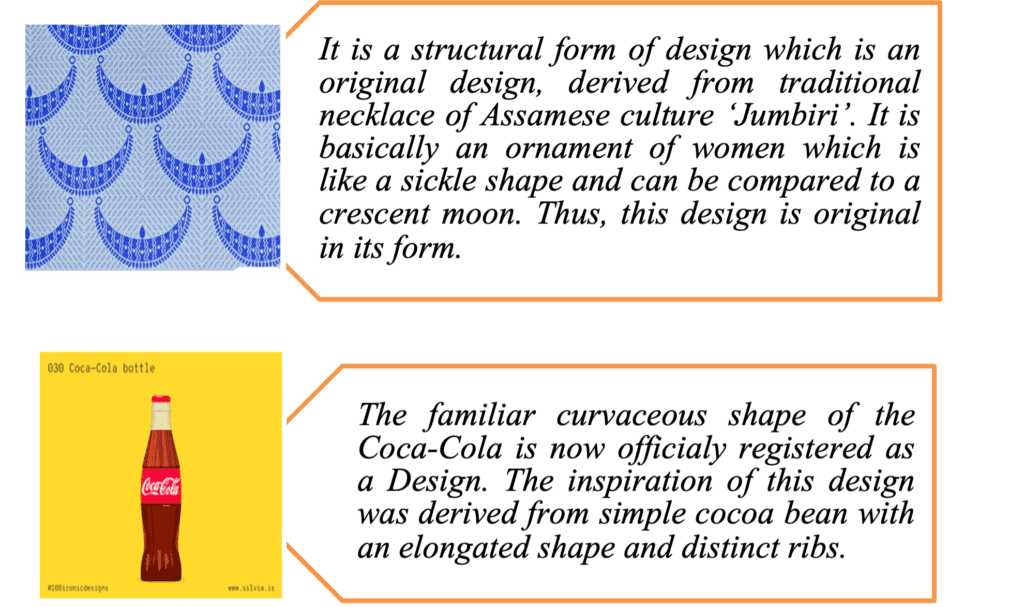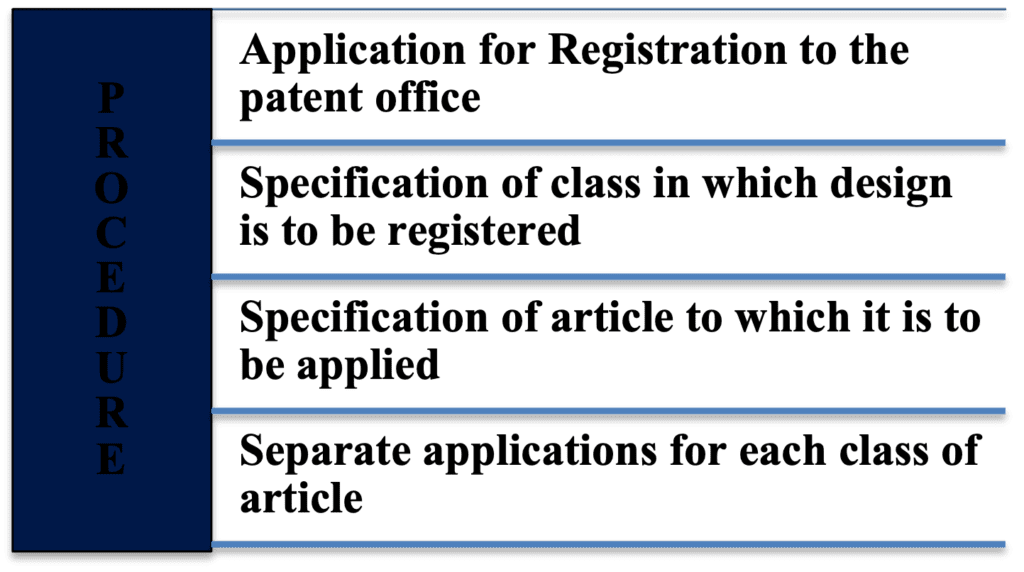Design is intelligence made visible!
In order to attract purchasers, an article should be outwardly appealing. The visual attraction of an article enhances its marketability and the terrible appearance of an article might antagonistically affect its attractiveness. In ancient times also, the artisans and craftsmen used to choose a shape or pattern to make the articles appealing to the eye of the purchasers by utilizing their own expertise.
After the industrial revolution, it became conceivable to give mass articles a unique shape by an industrial process. Today, manufacturers are giving sufficient consideration to the design of the articles they produce. For this purpose, they invest substantial capital and carry out exhaustive research. In view thereof, legal protection becomes essential for the creation of their new designs and their application to such articles.
PROTECTION OF DESIGNS IN INDIA
Earlier, the Design Act was governed by Design Act, 1911 but in order to bring the Design Act at par with International Law, the enactment of the Design Act, 2000 came into place. The objective of the Design Act, 2000 is to protect a new and original design that is to be applicable to a particular article manufactured by Industrial Process. The buyer of an article is influenced not only by the article’s physical efficiency but also by its aesthetic appearance. The primary purpose of registration of the design is to see that artisans, creators, and originators of a design having aesthetic look are not deprived of their bonafide reward by ensuring that others are not applying the said design to their goods. Design registration protects the external aspects of the design and not its technical or functional aspects.

According to the Design Act 2000, the word ‘Design’ means – “features of shape, pattern, configuration, ornament or composition of colours or lines which is applied in three dimensional or two dimensional or in both the forms using any of the processes whether manual, chemical, mechanical, separate or combined which in the finished article appeal to or judged wholly by the eye.”

CRITERIA FOR REGISTRATION OF A DESIGN
- Originality
The work which is completely new is considered to be eligible for registration. In several circumstances, old designs might be mixed but visuals of the designs should be new. The change only in the form and shape without any applicability or originality is not eligible to be registered under the Design Act. Therefore,
- It should be an original work
- Its application should be new
- Its visuals should be new
- A mixture of old designs is allowed but the final manufactured product should be new in order to be registered.
For instance –
What comes to our mind when we imagine the famous “Jumbiri Design” commonly used in Assamese textiles or the shape of the iconic “Coca-Cola” bottle?

- Design should be new, prior publication is not acceptable
There should not be any prior published or any copied versions of the design already in the market. In such circumstances, such design will not be acceptable for registration but personal use of the design for experimental purposes is acceptable.
- Design must follow moral standards
The design must be in accordance with the Design Act, 2000, and must not be banned by the government or by any such authority. The designs should be such which is not affecting the sentiments of the people and should be in accordance with Section 5 of the Designs Act, 2000.
- The design should relate to the article
The design should have direct applicability to the article in 3-dimensions and 2-dimensions. It should be of distinctive nature and must connect with the article.
WHO CAN FILE THE APPLICATION FOR THE REGISTRATION OF DESIGN?
Any person, including a natural person, an artificial person such as a firm, a Partnership/Corporate Body, or any other recognized legal entity who is a proprietor of the design, may register the design. A proprietor as per Section 2(j) includes a person who
- Is the author of that design
- The acquired design has valid consideration.
- Any person to whom the design has been delegated from the original proprietor.
PROCEDURE FOR REGISTRATION OF DESIGN IN INDIA

After the aforesaid procedure, the controller will send the application for examination to check whether the design is capable of being registered or not.
- In case of acceptance, the controller will proceed with the application
- In case of an objection, the applicant or his agent will be required to make necessary changes in order to register the design and nullify the objection. If the objection is not removed within three months after hearing then such application will be withdrawn.
ITEMS THAT CANNOT BE REGISTERED AS A DESIGN UNDER THE DESIGN ACT, 2000
- Buildings and structures
- Any parts of the article which are not manufactured and sold separately.
- Any signs, emblems, or countries’ flags.
- Size of any article, if changed
- Books, calendars, certificates, jackets, forms-and other documents, greeting cards, maps and plan cards, postcards, leaflets, stamps, medals, dressmaking patterns
- Trade variations
- Circuit layout designs
FEES
The fees for registration of a Design is Rs 1000/- for a natural person, Rs 2000/- for a small entity, Rs 4000/- for a large Entity. For further detailed information please visit – https://ipindia.gov.in/designs.htm
For more information, please email – [email protected]

